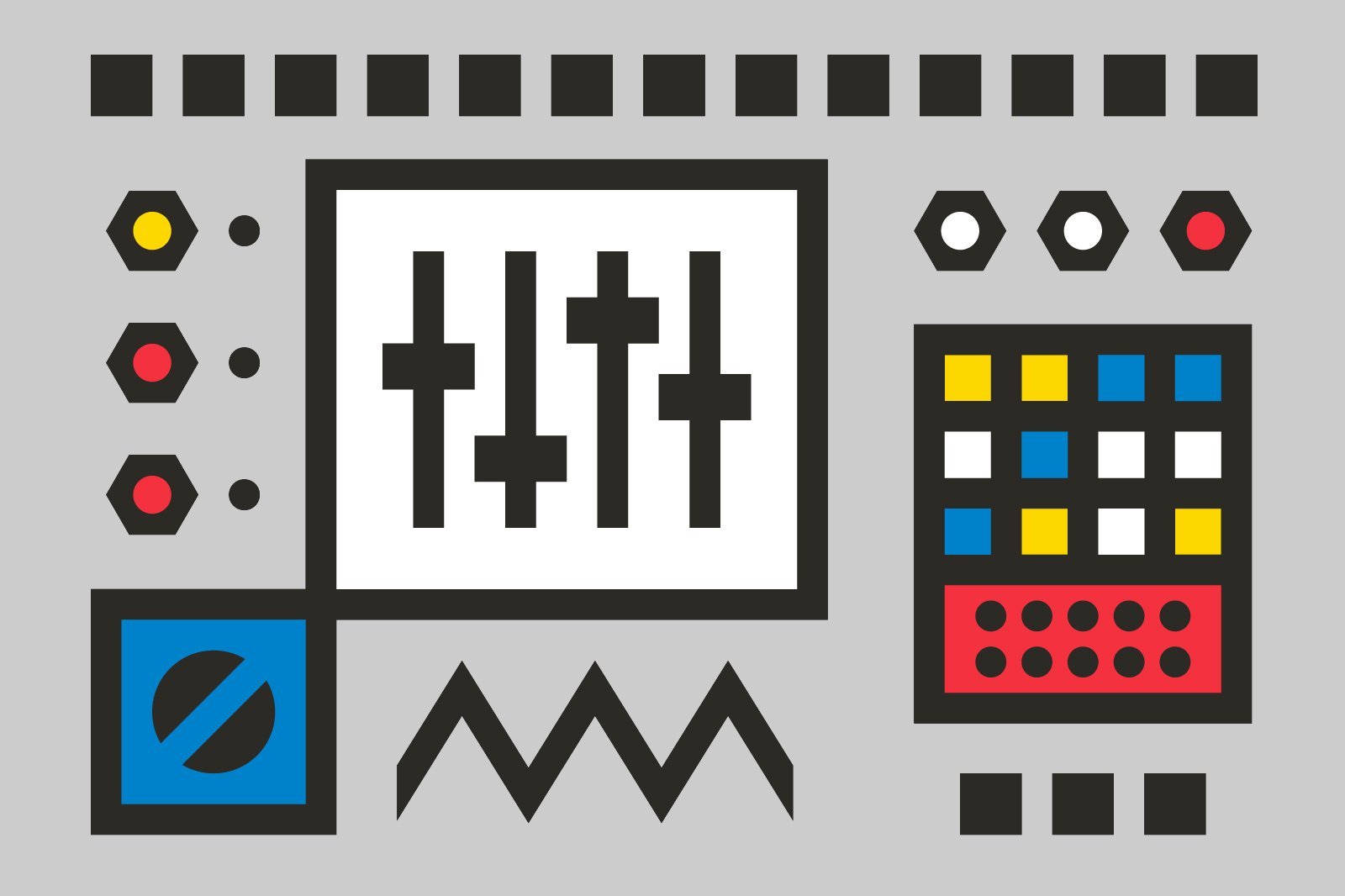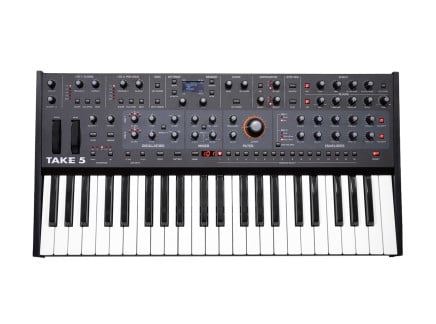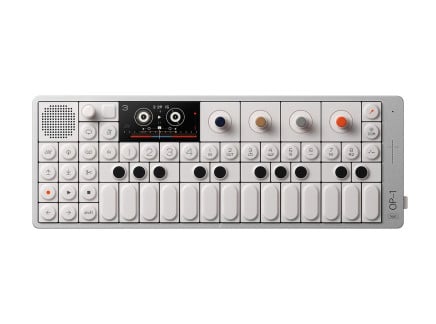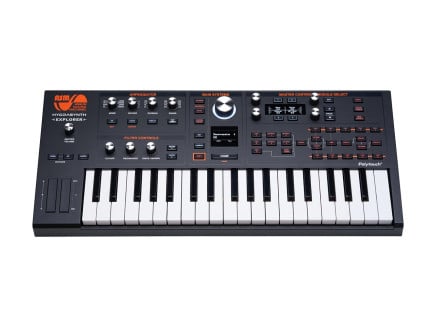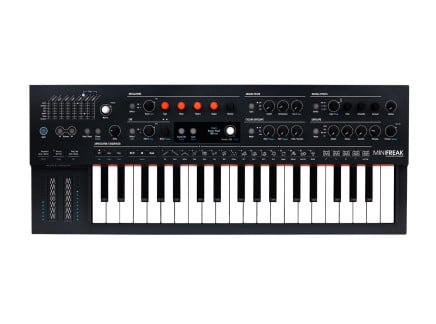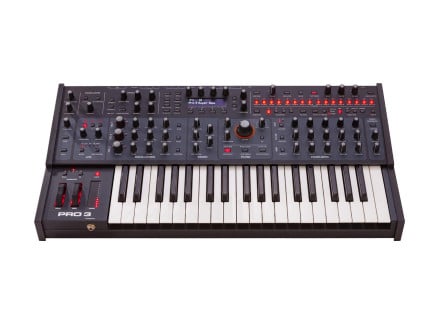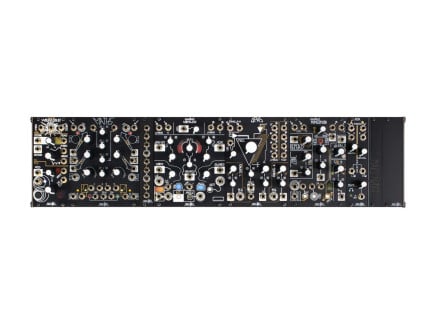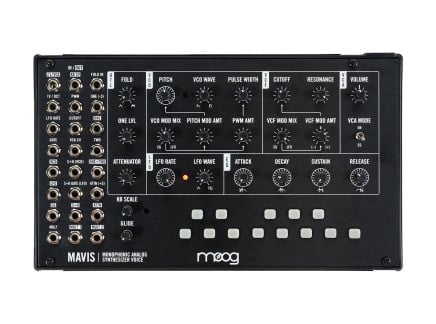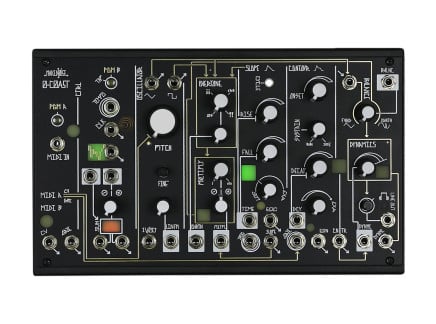In many people's minds, synthesizers can be divided into two categories: analog and digital. In some circles, this divide produces heated debate—argument erupt as to which is better, in terms of sound quality, reliability, portability, and countless other details.
In actuality, of course, neither approach to instrument design is inherently better, but each does have its own advantages and disadvantages. And, as time goes on, the differences between each style of synthesizer become murkier, and the gray area between them expands. In this article, we'll discuss basic definitions of several types of synthesizers, the pros and cons of each, and some of the many branches of synth design that you'll encounter as you traverse the world of electronic music.
Let's start with the big ones first: what does analog mean? What does digital mean?
What is an Analog Synthesizer?
The earliest synthesizers were all analog, having emerged before the heyday of the modern computer. These devices rely on specially-designed circuits that combine specific, low-level electronic components (like transistors, resistors, and capacitors) to create and modify sound. For the most part, synthesizers designed in the 1960s and 1970s were all analog. So, what is an analog synthesizer? An analog synthesizer is an instrument that produces sound with continuously fluctuating electrical voltages inside the instrument, usually offering a wide range of control over the sound's timbre or tone color.
The fluctuating voltages in an analog synthesizer usually originate from a Voltage-Controllable Oscillator (VCO) or a Noise Generator, which together provide several core timbres that get combined and altered by additional analog circuits, like Voltage-Controllable Filters (VCFs) and Voltage-Controllable Amplifiers (VCAs), which allow the user to change the overall tone color and loudness of the sound, respectively. Below, you can see the Moog Minimoog Model D—one of the most iconic and important analog synths of all time.
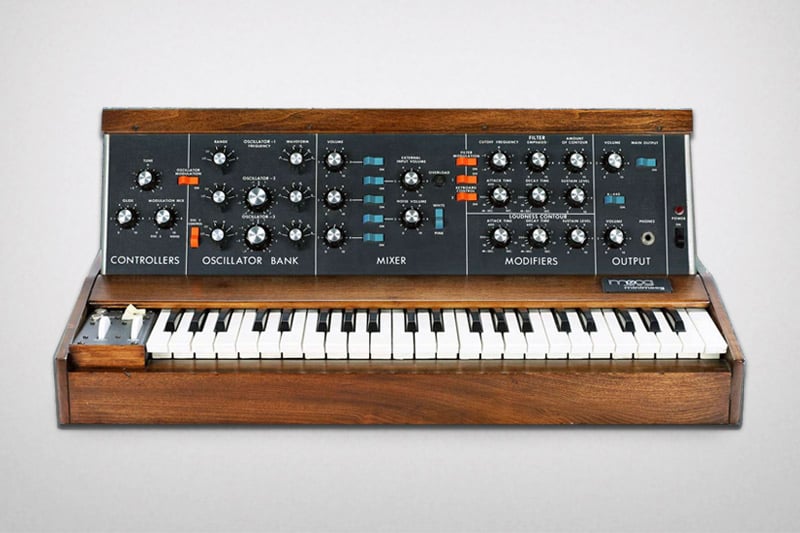
As digital technologies became more affordable in the 1980s, analog synthesis fell out of vogue. The resale value of classic analog synthesizers plummeted, and in the 1990s many up-and-coming musicians snatched up classic analog synths in pawn shops, garage sales, and the like at record low costs. Their embrace of these "obsolete" analog instruments eventually led to a resurgence of interest in analog designs. Today, analog synthesizers are back in full force and coexist alongside their digital counterparts. They can take any number of forms: monophonic or polyphonic keyboards, desktop or rack units, parts of a modular system, and more. While most things we think of as "classic" analog synths take the form of a keyboard, it's important to keep in mind that "analog" really just means that the sounds are generated and processed by specially-designed analog circuits.
Analog Synthesizers—the Pros:
- Associated with a "warm," immediate sound, often resulting from odd quirks of electronic components/circuits
- Sounds have infinite resolution—no limitations based on sample rate or bit depth here!
- Controls often have infinite resolution as well...so no "zippering" noise, and super immediate tactile response
- Usually have one-knob-per-function control, so modifying sound is straightforward and easy
Analog Synthesizers—the Cons:
- Often focus on a very specific (and in some senses, limited) tonal palette
- On older instruments, tuning can sometimes be temperamental
- Can sometimes be a bit expensive compared to digital synths of similar functionality
- Can require larger form factor for advanced instruments, given that the number of components directly relates to sound production capabilities
- If there is no digital control implemented, then may not have any possibility for preset memory or remote control via MIDI
What is a Digital Synthesizer?
As mentioned before, the 1980s saw the rise of digital synthesis technology. The reasons for this were numerous—and in fact, the first primary uses for digital tech in synth design didn't even have to do directly with sound generation at all. In the mid/late 1970s, analog synth manufacturers started to use digital technology in order to control analog circuits. This enabled some pretty profound new developments: polyphonic synthesizers became common, as did preset memory. Eventually, manufacturers started to focus on employing digital processes in sound generation as well...leading to a revolution in electronic instrument design. Instead of relying on analog techniques with VCOs, VCFs, and VCAs, designers began to dream up entirely new ways of creating sound, many of which would be impossible to achieve with purely analog circuits. This led to entirely new types of sounds. A digital synthesizer is a synthesizer which leverages the unique possiblities of digital technology to make sounds that often would be impossible (or just difficult) to achieve with analog synthesis alone.
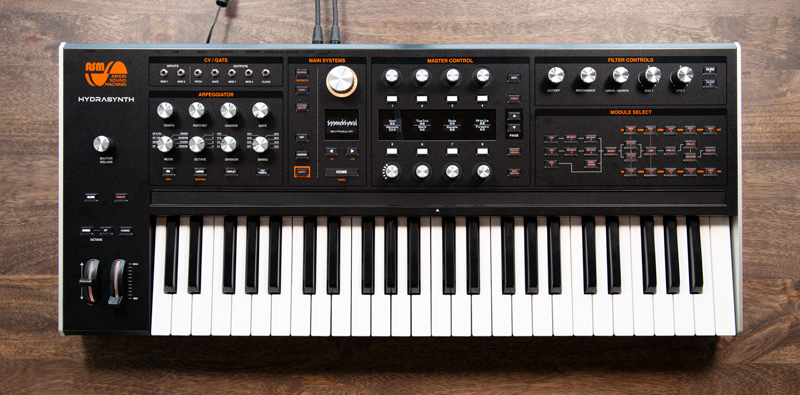
Digital synthesizers are, at their core, specialized computers. They use meticulously-constructed computer code in order to produce streams of data that react to user input and are eventually translated into sound. The nature of the programs determines the range of possible sounds instead of the physical/electrical properties of the components, meaning that in theory any type of sound is possible.
There are tons of synthesis techniques that rely on the unique possibilities of digital technology. Some digital techniques have persisted and are still available in modern instruments, including FM, sampling, additive synthesis, physical modeling, and more. And while in some circles "digital" seems like a "dirty word," there are countless digital instruments that have remained popular since their introduction: the Yamaha DX7, CMI Fairlight, New England Digital Synclavier, Sequential Prophet VS, and loads more are much-loved due to their unique sounds and workflows.
Digital Synthesizers—the Pros:
- Broadly speaking, digital synths are capable of producing a much wider range of sonic techniques than analog synths
- Digital technology can mean more novel types of sound production and control
- Usually capable of preset memory
- Often more affordable than analog synths with similar capabilities
- Form factors can vary widely—even very small instruments can be very powerful
Digital Synthesizers—the Cons:
- According to some, does not have "the sound" of analog...though this is difficult to quantify!
- Digital controls have inherently limited resolution—but new digital instruments often have a high enough resolution for satisfactory results
- Often more complex to repair if needed
- Sometimes favor a minimal physical design which requires more "menu diving" to operate...but not always!
So What Does Virtual Analog Mean, Then?
Things were weird in the '90s and early 2000s. Remember how vintage analog synths wound up being super cheap in the early '90s? Well, for the most part, those synthesizers all got snatched up super quickly, and eventually killer pawn shop deals became scarce. As this happened, many people who wound up with these synths started gaining musical influence—and yet other musicians began to long for the "good old days" of analog synthesis.
Since there were few analog synths in production at the time and the majority of the classic analog synths had found homes, the opportunity to buy or use analog synths became uncommon—and musicians yearned for the sound and workflow of instruments that produced some of their favorite music. After years of digital design, though, most large manufacturers were not ready to produce analog instruments to meet the demands of the public...after all, analog instruments were comparatively less flexible and more expensive to produce than digital synths. And this led to the birth of virtual analog.
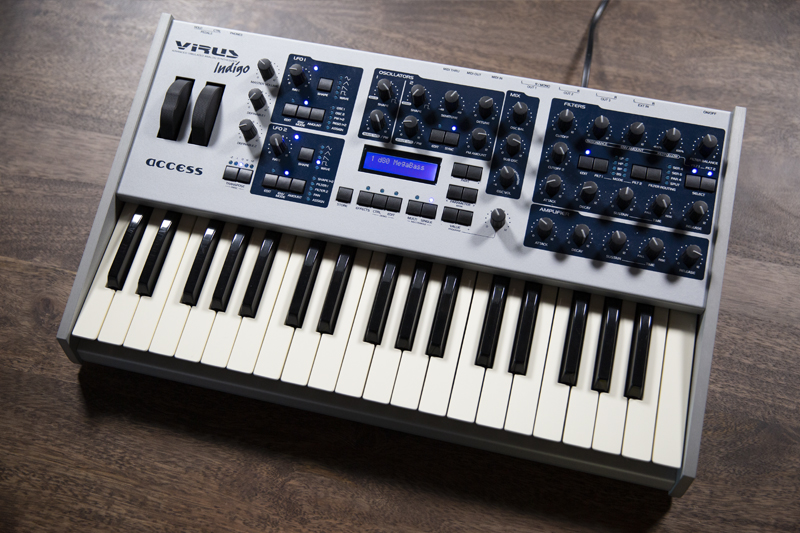
Virtual analog (VA) synthesizers are digital synths that emulate the workflow of analog synths. In most cases, they model the behavior of classic subtractive synthesis architectures...the kind you'd find in mainstream synths of the 1970s, like the Minimoog, Odyssey, Prophet-5, and others. Rather than exploiting uniquely digital techniques, VA synths use digital models of oscillators, filters, amplifiers, etc. to provide a user experience and sound similar to classic analog synths with the added advantages of digital synths: polyphony, preset memory, smaller footprint, and a generally lower price.
Classic VAs include the Nord Lead, Access Virus, Waldorf Q, Oberheim OB-12, Korg MS-2000, Alesis Ion, Yamaha AN-1x, and countless others. And of course, many VAs are still around—check out the venerable Korg Microkorg, the Modor NF-1, ASM Hydrasynth, or Waldorf Blofeld for a few examples of how interesting/unique modern VA techniques can be. Or, for those looking for classic synth workflows at a low price, check out Roland's Boutique series, which include VA realizations of several of their iconic synthesizers (including the SH-01A and JU-06A).
Virtual Analog Synthesizers—the Pros:
- Condenses analog synth workflow into a considerably smaller space than possible with actual analog gear
- Can provide a sense of the workflow of a modular or semi-modular synth without the footprint and patching
- Preset memory! A feat not possible in every analog synth
- Often have extensive MIDI implementation...again, not always the case with analog synths
Virtual Analog Synthesizers—the Cons:
- Do not always have "the sound" of their analog counterparts, often adding their own digital character (which isn't necessarily a bad thing!)
- Often have a limited set of modulation options pre-determined by the designer...unlike the completely open-ended world of modular synths
- Same issue with repair complexity as with other digital synths
- Depending on the design, may not have the same one-knob-per-function appeal of a true analog synth
Then What is a Hybrid Synthesizer?
Hybrid synthesizers have become increasingly common in the last decade, though they have their origins in the '70s and '80s. A hybrid synthesizer is usually uses a combination of analog and digital components, ideally providing some of the strengths of both analog and digital sound and design possibilities.
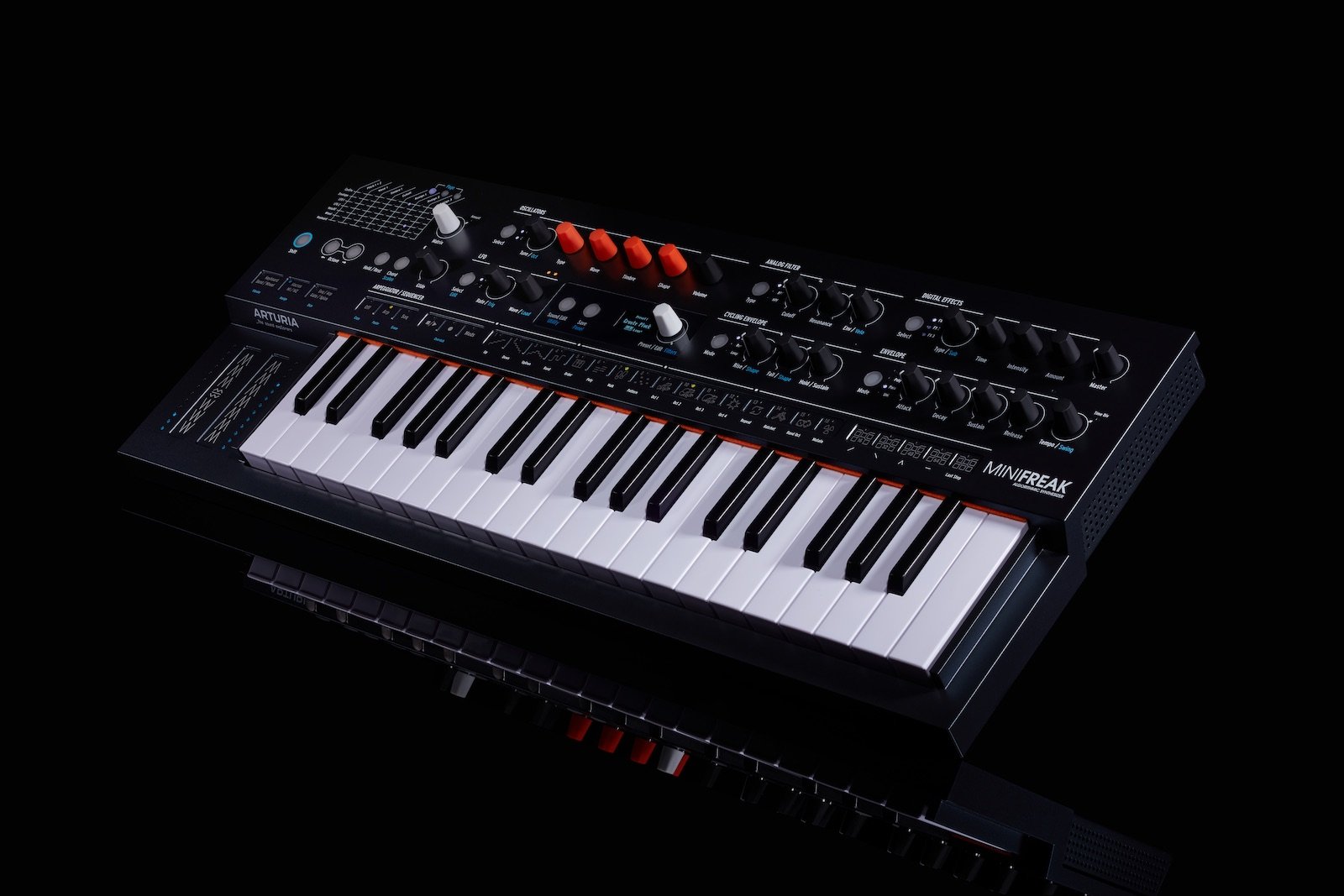
Because the term generally means that some aspects of the synthesizer are digital and some are analog, there can be a huge variation in how hybrid synths work. A common scheme is for a synth's oscillators, for instance, to be digital, and to then be processed by an analog filter—providing clean, reliable oscillator performance with the rich, deep coloration typically associated with an analog filter. Other instruments may provide the option for both analog and digital sound generation. Still other instruments may add digital effects to an analog signal path, or may simply take advantage of the options provided by implementing digital control, leaving the audio path mostly analog while adding extra options for modulation and performance control.
Perhaps one of the best-known makers of consistently interesting hybrid synths is Sequential, who have been combining the best aspects of digital and analog techniques since the 1970s. Their current flagship Prophet X is a hybrid instrument built around a sample-based sound engine with analog filters, allowing everything from creation of traditional instrument sounds (like dynamic strings and pianos), modern granular swarms, and traditional polysynth sounds. Similarly, their Pro 3 offers a combo analog/digital approach to monosynth design, resulting in one of the most capable "monophonic" synthesizers on the market. On the other side of the price spectrum, devices like Arturia's Microfreak prove that relying on digital sound generation can be a powerful way to simultaneously keep costs down and provide a unique sonic experience. With a combination of tons of digital synthesis methods and a true analog filter, the Microfreak is one of the most interesting and most affordable hybrid synths on the market. Its slightly more expensive (yet still surprisingly affordable) companion Minifreak is another stellar instrument—a six-voice hybrid synth with two digital sound engines and an analog filter per voice.
Hybrid Synthesizers—the Pros:
- Provides great aspects of both analog and digital approaches
- Often have a small footprint while still capitalizing on the advantageous sonic aspects of analog synths
- Can provide more extensive control options than the average true analog synth
- Can provide more extensive effect options than true analog synths
Hybrid Synthesizers—the Cons:
- Usually more expensive than similarly capable digital synths
- As with digital synths, do not always take a one-knob-per-function approach
But What About Modular Synths?
Analog, digital, VA, hybrid—but what about modular synths? Where do they fit in?
The important thing to note before diving into a definition of modular synths is that all of our categories so far have to do with how sound is generated and processed. The term "modular," though, refers to a form factor and not a particular means of sound production. Modular synthesizers can be any combination of digital or analog, just like keyboards or desktop synths. The original devices we might think of as modular synthesizers—the Moog, Buchla, ARP, Serge, etc. systems from the '60s and '70s—were mostly analog instruments, just like the keyboard synths that immediately followed them. Modern modular synths, though, are a playground of both analog and digital designs.
What makes a modular synth a modular synth is that it is comprised of modules: individual simple components which are selected by the user in order to construct a system that serves the user's musical purposes. These modules are then connected together with patch cables, which carry audio signals and control voltages: analog voltages which allow modules to control different aspects of one another's behavior. (Incidentally, if you want to know more about modular synths, how they work, where they come from, and why you might want to use them...check out our article What is a Modular Synthesizer?)
In the present day, a few universal standards for module size, power requirements, and interconnectivity standards have been adopted, making it easy to use modules from different designers all in one system. By far the most ubiquitous modular standard is called Eurorack. There are tons of Eurorack manufacturers, producing everything from clones of classic modules to completely new, DSP-based designs. Eurorack is particularly progressive in its embrace of digital technology. It's very possible (and common) for Eurorack systems to contain a mix of analog and digital sound generation/processing. One of the most important concepts is that, even if the module is digital at its core, all of its inputs and outputs receive and send analog voltages—meaning that all modules are interoperable.
Modular Synthesizers—the Pros:
- Tremendously flexible: allow you to design your own instrument
- Takes advantage of digital or analog techniques to whatever extent you desire
- Many modules take a far more adventurous approach to sound design than most self-contained synths
- Instrument can easily change over time—if part doesn't suit you, it can be replaced without changing the whole instrument
Modular Synthesizers—the Cons:
- Takes time to adapt to workflow
- Can be difficult to integrate into a larger DAW/MIDI-based setup, but certainly not impossible
- Usually more expensive than similar standalone synths (but that's an apples/oranges kind of comparison)
- Handling polyphony can be complex
What Does Semi-Modular Mean, Though?
Semi-modular synths often offer the same sorts of options for patchability and open-ended signal flow found in fully modular synths, but usually have a generally fixed architecture—meaning that individual "modules" cannot be added or removed, but the signal flow can be altered by using patch cables. The term "semi-modular" usually implies that the synth has a default fixed signal path, meaning that it can be used without involving patching, but allows extended options for control via built-in patch points. Classic examples of this type of workflow include Korg's MS-20 and ARP's 2600: both of which have, over time, become some of the best-known synthesizers, period.
Because they don't require patching in order to operate, semi-modular synths can be a great way to ease your way into the modular synth mindset. With modular synths, you need to set up a valid patch before the instrument will even make sound; but with semi-modular synths, you generally have a solid basis to work with and patch only as needed to expand what the instrument can do.
The aim of many modern semi-modular synths seems much the same as their vintage predecessors: to provide the experience of a modular synthesizer with greater immediacy and a lower price than their modular counterparts. Make Noise's 0-Coast, for instance, provides a mix of sonic resources which evoke the experience of classic Moog, Buchla, and Serge synths in a concise desktop format for under $500; Moog's Mavis provides classic Moog functionality for just under $350; and Cre8audio/Pittsburgh Modular's East Beast and West Pest offer the perfect starting point for newcomers, providing basic functionality and extended connectivity for under $250 each. Saving the end user the money required for a Eurorack case, the time required to research what individual modules they might want, and the initial hassle of needing to know how to patch before even getting a sound, these all provide a great way to get started with modular synthesis quickly and easily.
Of course, other form factors are possible as well, and much more elaborate semi-modular instruments are out there: Moog's Grandmother and Matriarch, for instance, are semi-modular analog keyboard synths, while Buchla USA's Easel Command offers a no-holds-barred update to one of Don Buchla's most famous (and quite peculiar) instruments. Similarly, Korg's ARP 2600 M and MS-20 Mini are modern re-introductions of classic semi-modular designs. Basically any form factor is possible—really, "semi-modular" just means that at least some patching is possible, but that the instrument otherwise has a more-or-less fixed internal signal flow.
By the way—if you're curious about semi-modular synths, I strongly recommend checking out our Semi-Modular Synthesizer Buying Guide, in which we talk about some of our favorite currently-available semi-modular synths...especially those well-suited to helping people to get their start with modular synthesis altogether.
Semi-Modular Synthesizers—the Pros:
- Combines the immediacy of a standalone synth with the flexibility of a modular system
- Great for people interested in modular who aren't quite ready to "take the plunge"
- Usually much more affordable than similar modular setups
- Usually much more compact form factor than the typical modular synth
- Integrates easily with modular synths
Semi-Modular Synthesizers—the Cons:
- Because of the combination of fixed and patchable signal paths, can take time to understand signal flow
- Not expandable in the same way as a modular system
- Usually not quite as advanced as more fully-fledged synths
- Usually monophonic (but not always)
What About Soft Synths?
And of course, there's the world of software synthesizers: virtual instruments with no direct physical form, which live only inside of a computer. Soft synths, of course, have a huge number of advantages: they're generally much more affordable than hardware synthesizers, usually offer extensive options for DAW integration, and are easy to travel with—not something you can say about every hardware synth out there. Additionally, soft synths can utilize any form of digital synthesis—virtual analog, FM, wavetable synthesis, sampling...the sky (and your computer's RAM) is the limit!
The debate as to whether software or hardware synths are "better" than one another has been going on for a long time. In the end, the sound itself is only one factor—and in a time when computers have become so powerful and DSP techniques have become so sophisticated, the sonic performance of software has the potential to be incredible...every bit as much as analog or digital hardware. And while many synthesists and electronic musicians see hardware as being superior or preferable, this is not always the case. There are many softwares out there that provide synthesis methods and workflows inaccessible in hardware format—be they emulations of vintage hardware or just new synthesis types altogether—and of course, their convenience is immeasurable...in terms of space, DAW integration, patch memory, and more.
In a time when computers are so powerful, perhaps the biggest potential downside to working exclusively with soft synths is that they have no physical interface with which to interact—permanently locked behind the screen, unable to be touched. Naturally, general-purpose MIDI controllers and specialized controllers can be used to take hands-on control of your software, but there's something often unique and magical about directly interacting with a well-designed instrument: it can prove to be inspiring in ways that interacting with software cannot always approach.
For those new to synthesis who are bent on working with hardware, software can be a great way to find out what techniques and sounds are important and inspiring to you, eventually guiding you toward an informed decision about what hardware you would benefit from having and what hardware you can live without. For those used to working with hardware alone, branching into the soft synth realm can in some cases provide an infrastructure for a much more convenient and/or portable workflow. I often suggest that people consider a mix of both approaches: use hardware for the things that are particularly inspiring to you that are difficult to achieve in the software realm, and use software for the things that hardware struggles to accomplish.
Software Synthesizers—the Pros:
- Usually much more affordable than hardware synths
- Can use any form of synthesis depending on the model—only bound to the limits of your CPU!
- No physical footprint...lightweight and portable!
- Inherent DAW integration
Software Synthesizers—the Cons:
- No direct physical interface...so lacks immediate hands-on control
- Always digital...so if you're an analog purist, this route is probably not for you
- Bound to the limits of your CPU! This can be a huge advantage in some cases...or a huge disadvantage in others
So...What Type of Synth is Best For You?
Having a grasp on the implications of these terms can give you a huge leg up in navigating the world of synthesizers...and hopefully you now have a firmer footing on which to assess the differences between, say, an ASM Hydrasynth, a Sequential Prophet-6, and Moog Matriarch.
So is analog better than digital? Not necessarily. Is hardware better than software? Not necessarily. In the end, every type of synthesizer is useful and has its advantages—and in the right hands, any instrument can produce astounding music. It's just a matter of identifying which balance of pros and cons best suits your own situation, and a matter of determining which approach or which instruments feel most inspiring to you. If something gets your creative wheels turning and inspires you to make music, then it is the right instrument for you.
Looking to pick up a synth of your own? Scope out our comprehensive guide of the best synthesizers for beginners for our strongest recommendations for fun synths that will help you learn for years to come. And, if you don't see something you like there, be sure to check out our full selection of keyboards and standalone synthesizers or our inventory of modular synthesizers to find the best synth for you and your music—and don't hesitate to reach out if you need help finding the perfect thing.

